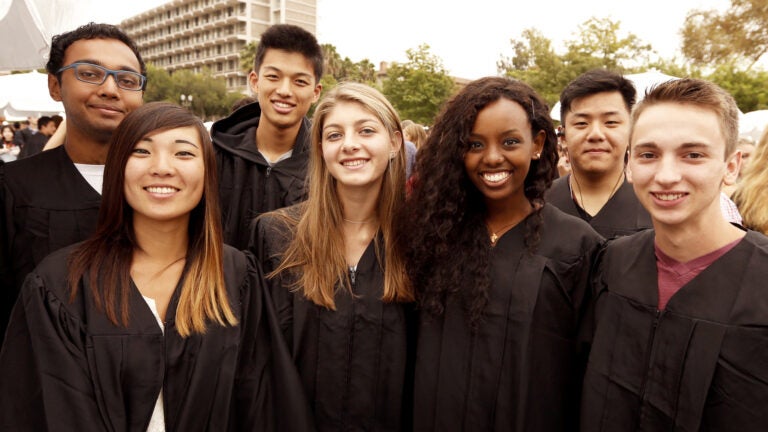
Meet the new Trojans: the most diverse and academically talented in USC history
The Class of 2019 includes more underrepresented minority students than at most other private research universities
USC’s entering undergraduate student body is among the most diverse and academically talented in the university’s history thanks to efforts by the university to increase access across the full spectrum of eligible students.
Freshmen who are the first in their families to attend college make up 14 percent of the Class of 2019; 17 percent of freshmen are low income (as defined by Pell Grant eligibility); and more than two-thirds will receive financial assistance.
“A global research university needs to provide educational access and opportunity to all,” said Provost Michael Quick, himself a first-generation college student. “The diversity of our incoming class illustrates our ongoing commitment to finding the next generation of leaders from all walks of life.”
A highly selective admission rate
On average, incoming freshmen scored in the 95th percentile on standardized tests and earned an un-weighted GPA of 3.73 in high school. Nearly one in five USC freshmen earned straight A’s during high school.
A record 51,925 applications were submitted for consideration for the Class of 2019, and admission was offered to 9,181 applicants. The admission rate of 17.7 percent is the most selective in the university’s history.
Included among these students is the first class of the USC Kaufman School of Dance, a group of 15 men and 18 women who include aspiring choreographers, hip-hop dancers, ballerinas and contemporary dancers. More than half of the new USC Kaufman students are first-generation or underrepresented minority students.
USC’s faculty are sure to be impressed by the academic prowess, intellectual curiosity and ethnic diversity of USC’s Class of 2019.
Timothy Brunold
“USC’s faculty are sure to be impressed by the academic prowess, intellectual curiosity and ethnic diversity of USC’s Class of 2019,” said Timothy Brunold, USC dean of admission. “No matter the measure, these new Trojans are remarkable and are bound to make a profound impact not only at our university, but on the world at large.”
By the numbers
Overall, the Class of 2019 represents a highly competitive and highly diverse group of students, with broad geographic representation:
- The class ranks among the most ethnically diverse ever enrolled at USC, with 22 percent underrepresented minority students, including 7 percent African-American, 13 percent Latino and 2 percent Native American/Pacific Islander.
- Overall, 43 percent of newly enrolled students are from California, and 17 percent hail from the East Coast (the highest percentage in USC history). Outside California, the leading U.S. states of residence of incoming freshmen are, in order: Texas, New York, Illinois and Washington.
- International students (15 percent) are citizens of 52 different countries. The most represented places of origin outside the United States are China, India, Canada, South Korea and Taiwan.
USC remains among the nation’s top private research universities for the percentage of its students who are low income — 24 percent of the total undergraduate population, or more than 4,300 students, were Pell-eligible during the 2014-15 academic year. The difference in Pell-eligible students from the freshman class to all enrolled undergraduates is a direct result of USC’s ongoing efforts to accept high-achieving transfer students, especially from community colleges.
USC enrolls more underrepresented minority students (African-American, Latino Pacific Islander and Native American) than most other private research universities in the country (more than 3,400 undergraduates this fall, or 18 percent of its total undergraduate population).
Low-income, first-generation and underrepresented minority students at USC graduate at rates comparable to the overall undergraduate population. USC’s graduation rate for the undergraduate population is 92 percent.
USC distributes more than $300 million in financial aid per year from all university sources. The university offers admission without regard to ability to pay, and it meets 100 percent of the demonstrated need of on-time financial aid applicants.
